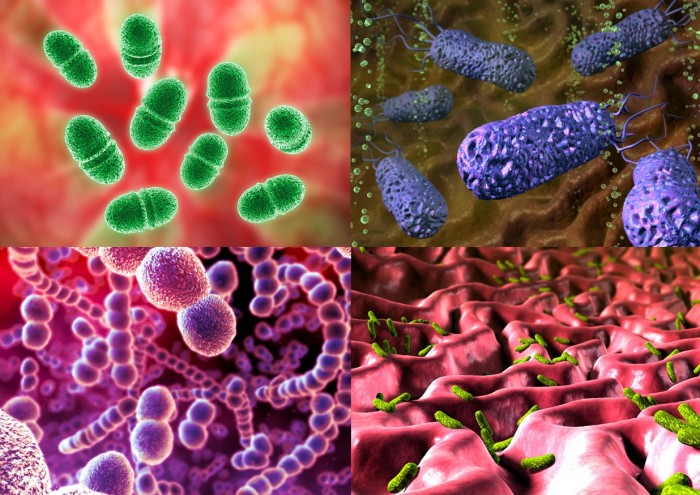Meet bacteria, which make up 90 percent of the living cells in the body. The human body is home to trillions of life forms, from the rod-like E. coli, which uses its three tails to energetically move around inside us, to the Salmonella bacteria, which cause food poisoning but can live happily on our skin. without having any influence on us.


1. Computer image of bacteria (blue and green) on human skin. Many types of bacteria are found on human skin, especially those associated with the secretions of sweat glands and hair follicles. They generally do not cause problems, although some may cause acne. Bacteria can usually only become a problem if it gets under the skin, such as through a wound or cut.

2. There are between 500 and 1000 different types of bacteria in every human body. They multiply to number 100 trillion cells - about ten times more than the human cells that make up one organism.
Computer image of Helicobacter Pylori bacteria in the stomach, associated with gastric ulcers and cancer.

3. Cork Institute of Technology lecturer Dr Roy Sleetor says: “The human gut alone contains almost four and a half pounds of bacteria. We are, in fact, only ten per cent human – the rest is made up of various microbes.”
Computer generated image of chains of pneumonia bacteria Streptococcus pneumoniae. These are oval-shaped gram-positive bacteria that are one of the causes of pneumonia. They can also cause dangerous lung infections.

4. The fact that we are made up primarily of different bacteria can be alarming, but Dr. Slithordal understands that bacteria work for our benefit - and without them we would not survive. “This bacterial-human interaction is largely symbiotic. In exchange for food and nutrition, bacteria help us with digestion, form vitamins and help strengthen our immune system. In addition, they protect us from pathogenic infections - the so-called “bad bacteria,” he says.
Computer image of E. coli bacteria inside the intestines. They can cause bacterial diarrhea.

5. Conceptual image of several cocci bacteria on the surface of a cell.

6. Ciliated rod-shaped bacterium. Typical rod-shaped bacteria include Escherichia coli and Salmonella.

7. Floating bacteria.

8. Electron microscope image of Helicobacter Pylori.

9. Ciliated (with hairs) rod-shaped bacteria.

10. Helicobacter Pylori bacteria.

11. Typical rod-shaped bacteria E. coli and Salmonella bacteria, These bacteria have flagella (hair-like structures) at one end that allow them to move.

12. Computer image of Enterococcus faecalis bacteria. The bacterium is one of the so-called superviruses that are resistant to antibiotics.

13. Computer image of Helicobacter pylori bacteria in the human stomach. They cause gastritis and are the most common cause of stomach ulcers. They can also cause stomach cancer and cause stomach bleeding.





















